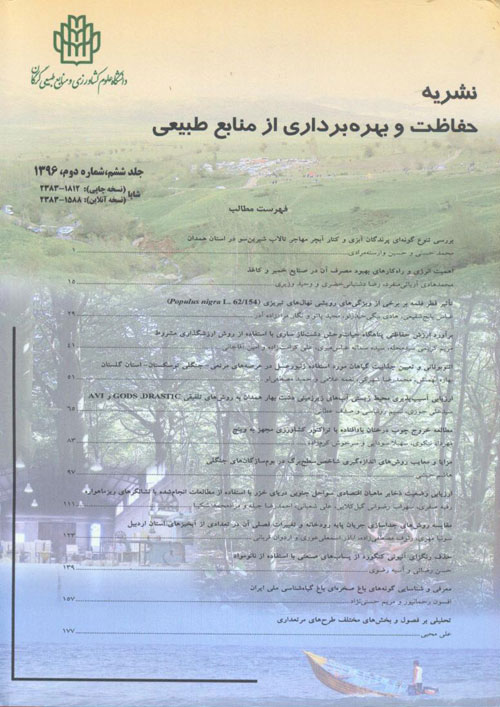Investigation of anatomical and chemical characteristics of Calotropis procera wood
Author(s):
Abstract:
Background And Objectives
In this study morphological characteristics and chemical composition of Calotropis procera species were analysed with the goal of applying its wood in wood and paper industry. This species has been studied due to its resistance to drought, its numerous applications in industries such as rubber and textile industry and medicinal properties of its root bark in treatment of various diseases. Also it has three fibers in seed pod, bark and stem. This species was sampled from Jiroft in Kerman province of Iran.Material and
Method
For determining the chemical composition, samples were taken from 1/3 of stem height and powder of wood was prepared according to standard T257om-85 of regulations TAPPI. Content of holocellulose, cellulose, lignin, ash, acetone-soluble extractive and hot water extractive were measured according to TAPPI methods. Fibers in stem, stem bark, branch and branch bark were separated by Franklin method. Dimension of fibers were measured with electronic microscope. Anatomical studies were performed based on International Association for Wood Anatomy (IAWA).Results
The anatomical characteristics, fiber biometry and chemical compounds of this species were recorded. Mean values of trunk and Bark fibers length were 1.09 and 15 mm, respectively. Branch bark of this plant has long fibers and its trunk fiber length was in the range of poplar wood fibers. Fiber diameter, cavity diameter and wall thickness of trunk fiber were 37.5, 29.0, and 4.37 µm, respectively. The biometry factors include raunkel, flexibility, and slenderness ratios of fibers were determined 30.65, 76.53, and 28.92, respectively. Results of trunk chemical compounds analysis showed that, the trunk is composed of %58.76 cellulose, %25.6 lignin, %1.56 acetone-soluble extractives, %6.5 hot water soluble extractives and %1.66 ash.Conclusion
According to the results of the chemical analysis, this species has low extractives and ash content but the amount of lignin was high. Cellulose content of this species is higher than the typical cellulose content of hardwood and softwood species. This feature is an important characteristic in paper making industry due to its direct effect on pulping efficiency. Therefore regarding the suitability of trunk fibers and high cellulose contents, this species can be used in lignocellulosic industries such as paper making. Keywords:
Language:
Persian
Published:
Journal of Conservation and Utilization of Natural Resources, Volume:5 Issue: 1, 2016
Pages:
37 to 52
magiran.com/p1647717
دانلود و مطالعه متن این مقاله با یکی از روشهای زیر امکان پذیر است:
اشتراک شخصی
با عضویت و پرداخت آنلاین حق اشتراک یکساله به مبلغ 1,390,000ريال میتوانید 70 عنوان مطلب دانلود کنید!
اشتراک سازمانی
به کتابخانه دانشگاه یا محل کار خود پیشنهاد کنید تا اشتراک سازمانی این پایگاه را برای دسترسی نامحدود همه کاربران به متن مطالب تهیه نمایند!
توجه!
- حق عضویت دریافتی صرف حمایت از نشریات عضو و نگهداری، تکمیل و توسعه مگیران میشود.
- پرداخت حق اشتراک و دانلود مقالات اجازه بازنشر آن در سایر رسانههای چاپی و دیجیتال را به کاربر نمیدهد.
In order to view content subscription is required
Personal subscription
Subscribe magiran.com for 70 € euros via PayPal and download 70 articles during a year.
Organization subscription
Please contact us to subscribe your university or library for unlimited access!



